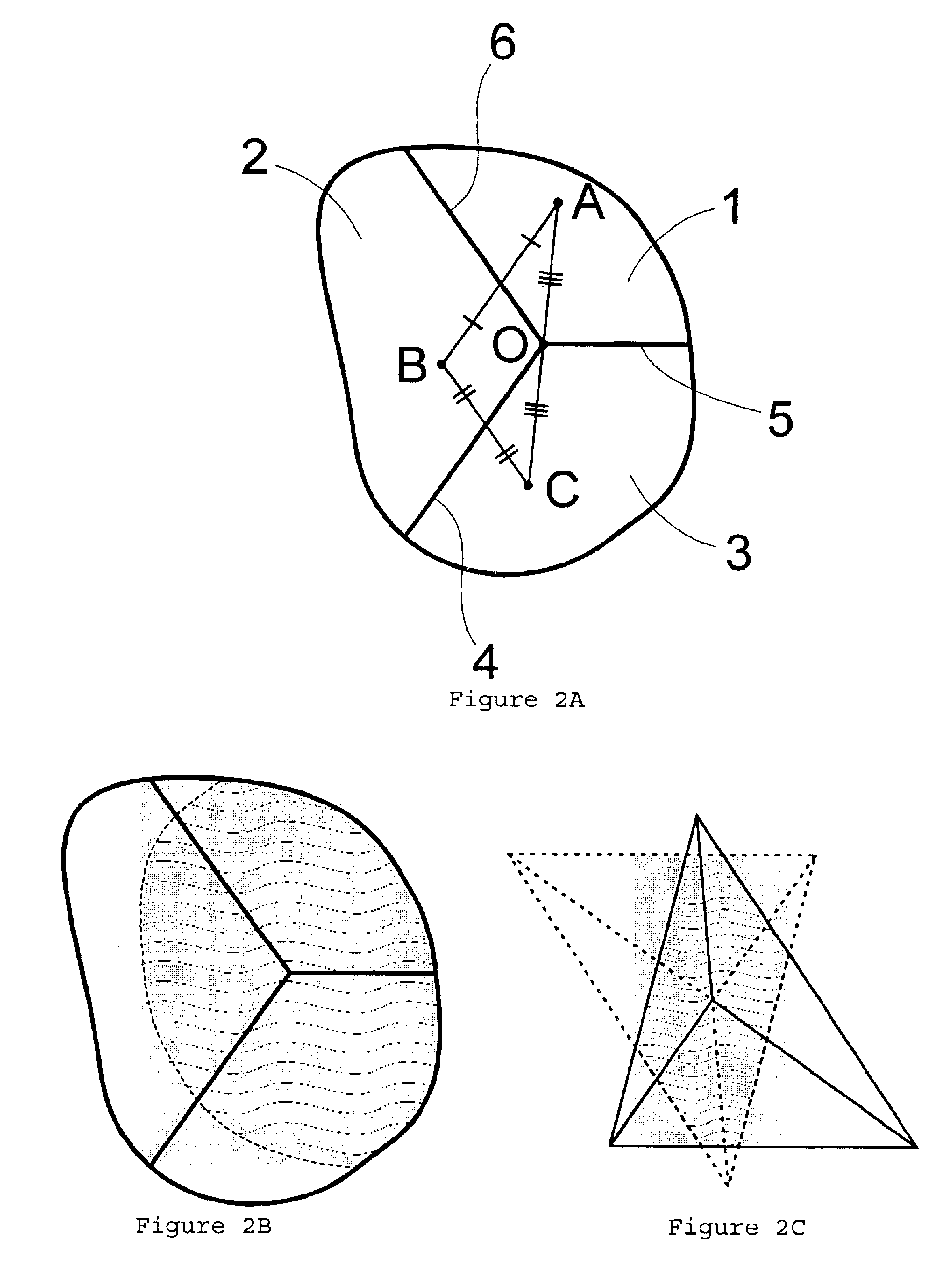Tri-level cube corner ruling
a cube corner and tri-level technology, applied in the direction of reflex reflectors, thin material processing, instruments, etc., can solve the problems of low angularity of the entrance, frequent failure of tir, and inability to make tir, so as to achieve easy and accurate making, high entrance angularity, and efficient and cost-effective
- Summary
- Abstract
- Description
- Claims
- Application Information
AI Technical Summary
Benefits of technology
Problems solved by technology
Method used
Image
Examples
Embodiment Construction
[0117]Two geometrical theorems are useful for explaining the invention.
[0118]Theorem 1 (FIG. 23). For any three points A, B, and C in a plane there is one and only one point O above the plane such that AO, BO, and CO are mutually perpendicular. Furthermore, a perpendicular from O to the plane finds the orthocenter of triangle ABC, that is, point H where the three altitudes of triangle ABC meet.
[0119]Theorem 2 (FIG. 24). In a plane, if ABC is any triangle and A′B′C′ is the same triangle rotated 180° about some point in the plane, then the greatest possible area of intersection of the two triangles is ⅔ the area of one triangle, and this occurs only when the rotation is about the centroid of triangle ABC, that is, about the point G where the three medians of triangle ABC meet. The centroid of triangle A′B′C′ is at the same point.
[0120]Theorem 1 implies that whenever a triangular cube corner is viewed normal to the plane of the triangle, the cube corner's three dihedral edges appear as...
PUM
 Login to View More
Login to View More Abstract
Description
Claims
Application Information
 Login to View More
Login to View More - R&D
- Intellectual Property
- Life Sciences
- Materials
- Tech Scout
- Unparalleled Data Quality
- Higher Quality Content
- 60% Fewer Hallucinations
Browse by: Latest US Patents, China's latest patents, Technical Efficacy Thesaurus, Application Domain, Technology Topic, Popular Technical Reports.
© 2025 PatSnap. All rights reserved.Legal|Privacy policy|Modern Slavery Act Transparency Statement|Sitemap|About US| Contact US: help@patsnap.com



